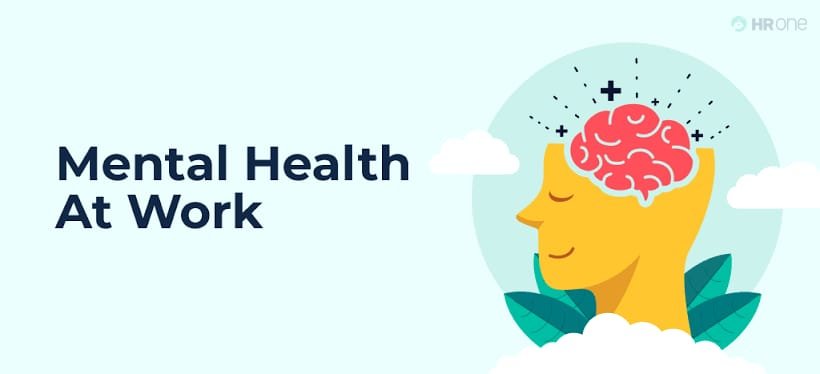In today’s fast-paced, highly competitive world, mental health has become a cornerstone of overall well-being—especially in the workplace. While physical health has traditionally received more attention, mental health is now recognized as equally crucial to a productive and sustainable professional life. The workplace, where many people spend a majority of their waking hours, plays a significant role in shaping mental well-being, either positively or negatively.

The Rising Tide of Workplace Stress
Work-related stress is one of the leading causes of mental health issues today. Tight deadlines, long hours, high expectations, job insecurity, and lack of support can lead to anxiety, burnout, and even depression. The digital era, with its constant notifications and pressure to be “always on,” has further blurred the boundaries between work and personal life, making it even harder for employees to disconnect and recharge.
According to global health studies, a large percentage of employees report feeling stressed or overwhelmed at work. Many suffer in silence due to the fear of being perceived as weak or unprofessional. This stigma around mental health prevents open dialogue and often leads to worsening conditions.
The Importance of a Mentally Healthy Workplace
A mentally healthy workplace benefits both employees and employers. When mental well-being is prioritized, employees are more engaged, creative, and productive. They are also less likely to take sick days or leave the organization altogether. In contrast, workplaces that ignore mental health can see higher turnover, decreased morale, and a toxic work culture.
Creating a supportive environment can lead to better team dynamics, stronger communication, and a more positive overall atmosphere. It’s not just about preventing harm; it’s about building a culture where people can thrive.
Signs of Poor Mental Health at Work
It’s important for both employers and employees to recognize the signs of declining mental health in the workplace. These may include:
Decreased productivity or quality of work
Increased absenteeism or frequent lateness
Withdrawal from colleagues or workplace activities
Irritability, mood swings, or emotional outbursts
Difficulty concentrating or making decisions
When these signs go unnoticed or unaddressed, they can evolve into more serious mental health issues.
Steps to Promote Mental Health in the Workplace

Creating a mentally healthy work environment doesn’t require large-scale reforms—it starts with small, consistent actions. Here are some key strategies:
Encourage Open Dialogue
Normalize conversations about mental health. Leaders should be approachable and willing to discuss mental well-being without judgment.
Promote Work-Life Balance
Discourage a culture of overworking. Respect personal boundaries, offer flexible working hours, and encourage employees to take breaks and vacations.
Provide Mental Health Resources
Offer access to counseling services, workshops, and wellness programs. Even simple tools like stress management guides or mental health days can make a big difference.
Train Managers and HR Professionals
Equip them with the skills to recognize signs of distress and respond with empathy and appropriate action. A trained manager can be a powerful support system.
Create a Positive Work Environment
Foster a culture of respect, collaboration, and recognition. A positive atmosphere helps employees feel safe, valued, and motivated.
Address Workplace Bullying or Toxicity

Establish clear policies and enforce them. A toxic environment can be one of the most damaging factors to mental health.
Mental health is not a personal issue to be dealt with behind closed doors—it is a workplace issue that demands attention, compassion, and proactive strategies. By building a supportive environment, organizations can not only protect the well-being of their employees but also unlock their full potential. A mentally healthy workplace is not just a benefit; it’s a necessity for long-term success and a healthier society.
Let’s start treating mental health at work not as a problem to fix but as a culture to build.

